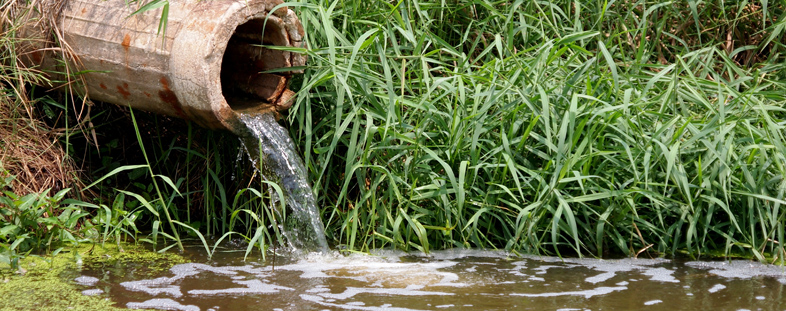
Sewage leaks highlight the need for effective SuDS
As the UK population grows, the demand for water to support our daily lives increases. From watering plants and gardens to personal hygiene, we are heavily reliant on a consistent water supply, leading to the need for effective drainage systems.
Traditionally, the sewer system has been the primary choice for draining water from homes and public infrastructure, however, many are outdated and inadequate for the current population’s needs. As a result, we are witnessing a strain on these systems, leading to instances of sewage leaks in our towns and rivers. This emphasises the urgent need to explore sustainable alternatives for drainage wherever feasible.
To highlight the problem, in its Surfers Against Sewage’s Water Quality Report 2022, it found that over the summer of 2022, sewage was dumped into the UK’s most popular surf and swim spots 5,504 times, equating to a total of 15,021 hours of discharging.
The report further found that over the course of 2020 and 2021, sewage has been dumped into oceans and rivers around the UK more than 770,000 times.
The time for SuDS
Sustainable Drainage Systems (SuDS) provide an alternative approach to drainage. They offer various methods to manage water runoff, such as infiltration into the ground through soakaways, draining into local rivers and the sea, or collecting water for reuse. By diverting water away from the sewer system, we can alleviate stress on the infrastructure and reduce the likelihood of leaks.
Before implementing drainage solutions, such as discharging water into rivers, it is crucial to consider the water quality. Draining untreated wastewater directly into rivers, from showers and toilets as an example, would defeat the purpose of protecting our sewer systems. Rainwater, on the other hand, is an excellent candidate for collection and drainage through SuDS techniques. However, when rainwater comes into contact with urban environments, it can pick up contaminants and pollutants, diminishing its quality.
Implementing green infrastructure
Rather than surrendering to these challenges, it is essential to address them head-on. By incorporating green infrastructure into projects, we can effectively reduce the percentage of contaminated water. When hard landscaping is required, following the guidelines outlined in Chapter 26 of the CIRIA SuDS Manual C753 provides valuable insights. This chapter offers guidance not only on treatment options but also on determining the most appropriate treatment for a specific site.
Options such as swale units and filter strips can contribute to achieving the required water quality. In areas where pollutant contamination is high, more rigorous treatment measures may be necessary. To support water quality in such areas, ACO offers a range of water treatment options through our V-Septor and QuadraCeptor ranges.
The V-Septor removes sediment-bound contaminants and also helps to reduce sediment build-up in attenuation tanks downstream, decreasing how often the tank needs to be cleaned and maintained. Meanwhile, the QuadraCeptor is ideally suited to treating surface water run-off from highly trafficked areas. It is designed to remove heavy particles, silt, nutrients and dissolved materials like heavy metals from brake dust, in a four-stage process.
Ensuring that a project has the appropriate treatment and SUDS solutions can be a complex task. ACO provides comprehensive support, ranging from free Continued Professional Development (CPD) sessions to a free design service, to assist in making informed decisions about drainage and water treatment.
By prioritising sustainable drainage practices and utilising innovative solutions like SuDS, we can mitigate the strain on sewer systems, protect our environment from sewage leaks, and ensure the responsible management of our water resources.
If you are interested in the V-Septor you can find out more at: https://www.aco.co.uk/products/v-septor